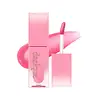What's inside
What's inside
 Key Ingredients
Key Ingredients

 Benefits
Benefits

 Concerns
Concerns

 Ingredients Side-by-side
Ingredients Side-by-side

Methyl Hydrogenated Rosinate
PerfumingDimer Dilinoleyl Dimer Dilinoleate
EmollientPolyglyceryl-10 Decaisostearate
EmollientPolyglyceryl-2 Triisostearate
EmulsifyingJojoba Esters
EmollientPolyglyceryl-3 Beeswax
EmulsifyingGlyceryl Behenate/Eicosadioate
EmollientEthylhexyl Palmitate
EmollientDipalmitoyl Hydroxyproline
Skin ConditioningTrimethylolpropane Triisostearate
EmollientMenthoxypropanediol
MaskingParfum
MaskingAluminum Hydroxide
EmollientPrunus Avium Seed Oil
EmollientEthyl Vanillin
MaskingTocopherol
AntioxidantTrihydroxystearin
Skin ConditioningCapsicum Frutescens Fruit Extract
Skin ConditioningPropyl Gallate
AntioxidantSodium Hyaluronate
HumectantGlucomannan
Skin ConditioningCI 77891
Cosmetic ColorantCI 77491
Cosmetic ColorantCI 77499
Cosmetic ColorantCI 15985
Cosmetic ColorantCI 15850
Cosmetic ColorantCI 42090
Cosmetic ColorantMethyl Hydrogenated Rosinate, Dimer Dilinoleyl Dimer Dilinoleate, Polyglyceryl-10 Decaisostearate, Polyglyceryl-2 Triisostearate, Jojoba Esters, Polyglyceryl-3 Beeswax, Glyceryl Behenate/Eicosadioate, Ethylhexyl Palmitate, Dipalmitoyl Hydroxyproline, Trimethylolpropane Triisostearate, Menthoxypropanediol, Parfum, Aluminum Hydroxide, Prunus Avium Seed Oil, Ethyl Vanillin, Tocopherol, Trihydroxystearin, Capsicum Frutescens Fruit Extract, Propyl Gallate, Sodium Hyaluronate, Glucomannan, CI 77891, CI 77491, CI 77499, CI 15985, CI 15850, CI 42090
Water
Skin ConditioningDiphenyl Dimethicone
EmollientDiisostearyl Malate
EmollientBis-Diglyceryl Polyacyladipate-2
EmollientDiglycerin
HumectantHydrogenated Polyisobutene
EmollientPhytosteryl/Isostearyl/Cetyl/Stearyl/Behenyl Dimer Dilinoleate
Skin ConditioningPolysorbate 60
EmulsifyingCetyl PEG/PPG-10/1 Dimethicone
EmulsifyingDipropylene Glycol
HumectantPolyphenylsilsesquioxane
Sorbitan Isostearate
EmulsifyingDiisostearoyl Polyglyceryl-3 Dimer Dilinoleate
Emollient1,2-Hexanediol
Skin ConditioningOctyldodecanol
EmollientCaprylic/Capric Triglyceride
MaskingHydroxyethyl Acrylate/Sodium Acryloyldimethyl Taurate Copolymer
Emulsion StabilisingCetearyl Alcohol
EmollientSqualane
EmollientPhenoxyethanol
PreservativeCI 77891
Cosmetic ColorantCI 45410
Cosmetic ColorantBenzyl Benzoate
AntimicrobialEthylhexylglycerin
Skin ConditioningCI 15985
Cosmetic ColorantParfum
MaskingAluminum Hydroxide
EmollientAmmonium Polyacrylate
StabilisingLinalool
PerfumingCI 17200
Cosmetic ColorantButylene Glycol
HumectantCI 42090
Cosmetic ColorantHexyl Cinnamal
PerfumingTocopherol
AntioxidantWater, Diphenyl Dimethicone, Diisostearyl Malate, Bis-Diglyceryl Polyacyladipate-2, Diglycerin, Hydrogenated Polyisobutene, Phytosteryl/Isostearyl/Cetyl/Stearyl/Behenyl Dimer Dilinoleate, Polysorbate 60, Cetyl PEG/PPG-10/1 Dimethicone, Dipropylene Glycol, Polyphenylsilsesquioxane, Sorbitan Isostearate, Diisostearoyl Polyglyceryl-3 Dimer Dilinoleate, 1,2-Hexanediol, Octyldodecanol, Caprylic/Capric Triglyceride, Hydroxyethyl Acrylate/Sodium Acryloyldimethyl Taurate Copolymer, Cetearyl Alcohol, Squalane, Phenoxyethanol, CI 77891, CI 45410, Benzyl Benzoate, Ethylhexylglycerin, CI 15985, Parfum, Aluminum Hydroxide, Ammonium Polyacrylate, Linalool, CI 17200, Butylene Glycol, CI 42090, Hexyl Cinnamal, Tocopherol
 Reviews
Reviews

Ingredients Explained
These ingredients are found in both products.
Ingredients higher up in an ingredient list are typically present in a larger amount.
Aluminum Hydroxide is a form of aluminum. It can be naturally found in nature as the mineral gibbsite. In cosmetics, Aluminum Hydroxide is used as a colorant, pH adjuster, and absorbent.
As a colorant, Aluminum Hydroxide may add opacity, or reduce the transparency. Aluminum hydroxide is contains both basic and acidic properties.
According to manufacturers, this ingredient is an emollient and humectant. This means it helps hydrate the skin.
In medicine, this ingredient is used to help relieve heartburn and help heal ulcers.
There is currently no credible scientific evidence linking aluminum hydroxide in cosmetics to increased cancer risk.
Major health organizations allow the use of aluminum hydroxide in personal care products and have not flagged it as a carcinogenic risk at typical usage levels.
Learn more about Aluminum HydroxideCi 15985 is a dye made from petroleum. It is synthetically created and approved by the FDA for use in foods and cosmetics.
The color of this dye is orange/yellow.
This ingredient can be found in makeup, sun care, and skincare.
Learn more about CI 15985Ci 42090 is a synthetic dye created from petroleum. It is used to give a bright blue color to cosmetics, medicine, and food.
Ci 77891 is a white pigment from Titanium dioxide. It is naturally found in minerals such as rutile and ilmenite.
It's main function is to add a white color to cosmetics. It can also be mixed with other colors to create different shades.
Ci 77891 is commonly found in sunscreens due to its ability to block UV rays.
Learn more about CI 77891Parfum is a catch-all term for an ingredient or more that is used to give a scent to products.
Also called "fragrance", this ingredient can be a blend of hundreds of chemicals or plant oils. This means every product with "fragrance" or "parfum" in the ingredients list is a different mixture.
For instance, Habanolide is a proprietary trade name for a specific aroma chemical. When used as a fragrance ingredient in cosmetics, most aroma chemicals fall under the broad labeling category of “FRAGRANCE” or “PARFUM” according to EU and US regulations.
The term 'parfum' or 'fragrance' is not regulated in many countries. In many cases, it is up to the brand to define this term.
For instance, many brands choose to label themselves as "fragrance-free" because they are not using synthetic fragrances. However, their products may still contain ingredients such as essential oils that are considered a fragrance by INCI standards.
One example is Calendula flower extract. Calendula is an essential oil that still imparts a scent or 'fragrance'.
Depending on the blend, the ingredients in the mixture can cause allergies and sensitivities on the skin. Some ingredients that are known EU allergens include linalool and citronellol.
Parfum can also be used to mask or cover an unpleasant scent.
The bottom line is: not all fragrances/parfum/ingredients are created equally. If you are worried about fragrances, we recommend taking a closer look at an ingredient. And of course, we always recommend speaking with a professional.
Learn more about ParfumTocopherol (also known as Vitamin E) is a common antioxidant used to help protect the skin from free-radicals and strengthen the skin barrier. It's also fat soluble - this means our skin is great at absorbing it.
Vitamin E also helps keep your natural skin lipids healthy. Your lipid skin barrier naturally consists of lipids, ceramides, and fatty acids. Vitamin E offers extra protection for your skin’s lipid barrier, keeping your skin healthy and nourished.
Another benefit is a bit of UV protection. Vitamin E helps reduce the damage caused by UVB rays. (It should not replace your sunscreen). Combining it with Vitamin C can decrease sunburned cells and hyperpigmentation after UV exposure.
You might have noticed Vitamin E + C often paired together. This is because it is great at stabilizing Vitamin C. Using the two together helps increase the effectiveness of both ingredients.
There are often claims that Vitamin E can reduce/prevent scarring, but these claims haven't been confirmed by scientific research.
Learn more about Tocopherol